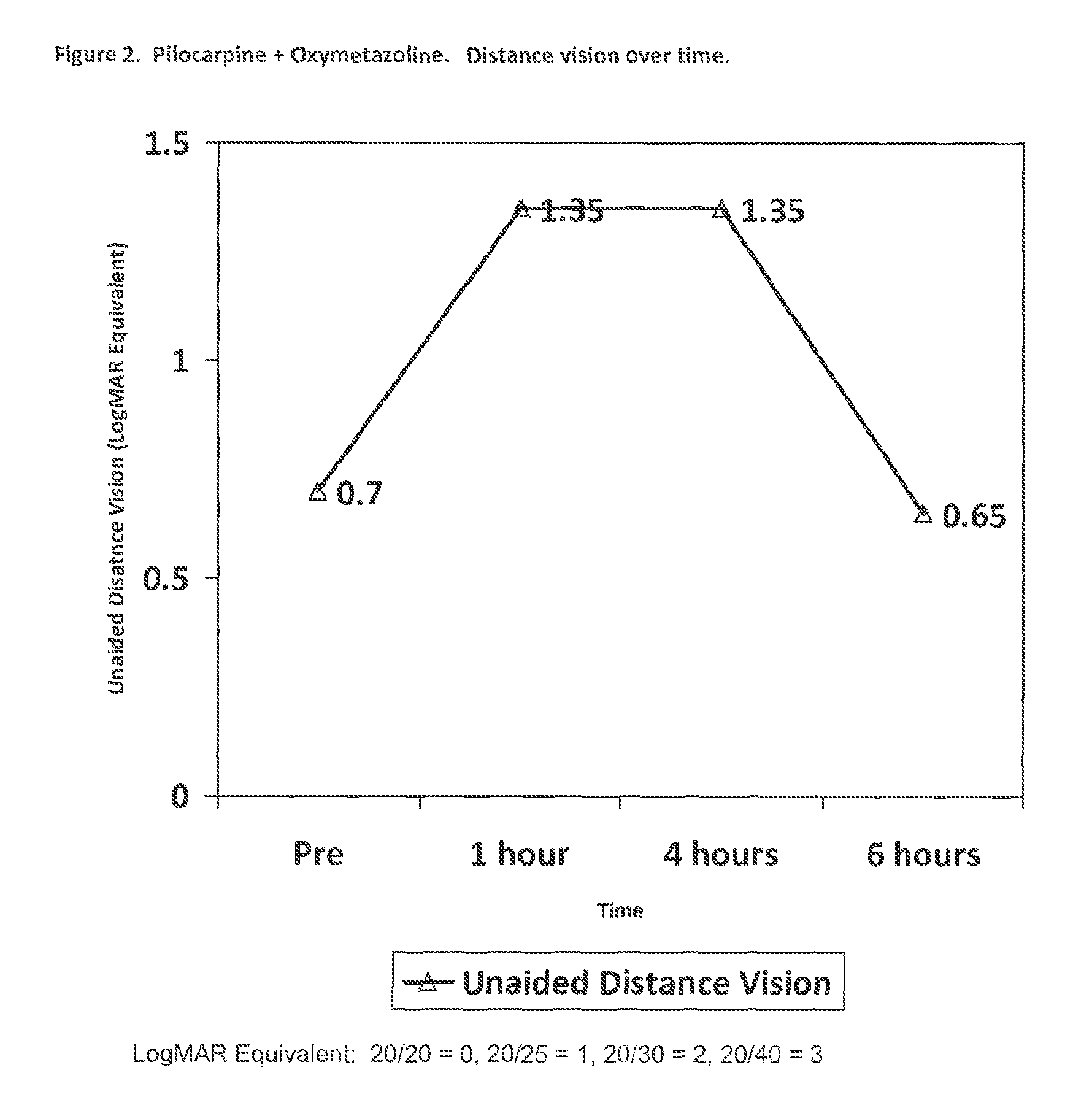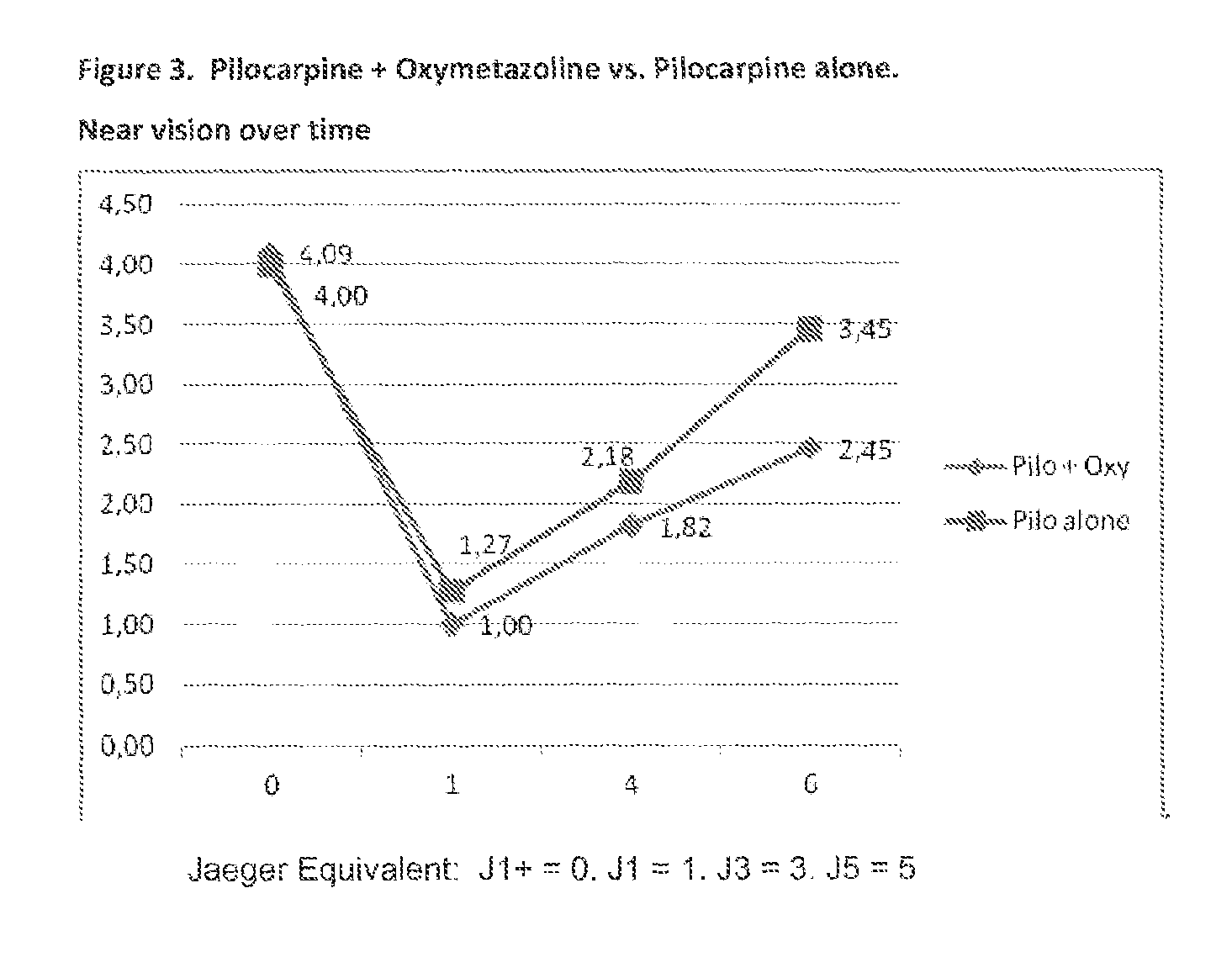Compositions and methods for treating presbyopia, mild hyperopia, and irregular astigmatism
a technology of presbyopia and compositions, applied in the field of compositions and methods for treating presbyopia, mild hyperopia, irregular astigmatism, can solve the problems of diclofenac being associated with serious side effects, many of these treatments have shown to be ineffective and/or have undesirable side effects, and the effectiveness of exercise in treating or preventing presbyopia has not been demonstrated in medical research, so as to enhance interventions, reduce side effects, and enhance the effect of treatmen
- Summary
- Abstract
- Description
- Claims
- Application Information
AI Technical Summary
Benefits of technology
Problems solved by technology
Method used
Image
Examples
example 1
[0062]A group of 10 patients (20 eyes) considered emmetropes or slightly hyperopic (Spherical equivalent from +0.88 D to −0.50 D with less than 1.00 D of astigmatism) was treated with a composition of the invention. Each patient had an extensive ocular examination prior to treatment that included: 1) refractive power of each eye; 2) the unaided distance visual acuity (UDVA) measured using an Snellen chart; 3) the unaided near vision (UNVA) measured at 40 centimeters using a hand-held Rosembaum chart and the Jaeger notation; and 4) the pupillary diameter measured in medium lighting (mesopic) conditions with a special infrared camera device.
[0063]Three drops containing 1% pilocarpine and 0.125% oxymetazoline w / w dissolved in a solution of 0.5% sodium chloride, with carboxymethyl cellulose as a viscosant and benzalkonium chloride as preservative were instilled into each eye three times separated 5 minutes each, and the same measurements were taken one hour, four hours and six hours lat...
example 2
[0069]Five patients (ten eyes) from 30 to 55 years-old with “mild hyperopia” (i.e., eyes having a spherical equivalent from +0.50 to +2.00 D) were treated with three drops of 1% pilocarpine and 0.125% oxymetazoline separated 5 minutes. Following treatment, all of the patients were able to improve their unaided distance visual acuity at one and four hours. Thirty-five percent had an improvement in one line of distance vision at 6 hours
example 3
[0070]A group of 10 patients (20 eyes) considered emmetropes or slightly hyperopic (Spherical equivalent from +0.88 D to −0.13 D with less than 1.00 D of astigmatism) was treated with a composition of the invention. Each patient had an extensive ocular examination prior to treatment that included: 1) refractive power of each eye; 2) the unaided distance visual acuity (UDVA) measured using an Snellen chart; 3) the unaided near vision (UNVA) measured at 40 centimeters using a hand-held Rosembaum chart and the Jaeger notation; and 4) the pupillary diameter measured in medium lighting (mesopic) conditions with a special infrared camera device.
[0071]One drop containing 1% pilocarpine and 0.025% oxymetazoline w / w dissolved in a solution of 0.5% sodium chloride, with carboxymethyl cellulose as a viscosant and benzalkonium chloride as preservative were instilled once into the right eye, and the same solution containing 1% pilocarpine without oxymetazoline was instilled once into the left ey...
PUM
 Login to View More
Login to View More Abstract
Description
Claims
Application Information
 Login to View More
Login to View More - R&D
- Intellectual Property
- Life Sciences
- Materials
- Tech Scout
- Unparalleled Data Quality
- Higher Quality Content
- 60% Fewer Hallucinations
Browse by: Latest US Patents, China's latest patents, Technical Efficacy Thesaurus, Application Domain, Technology Topic, Popular Technical Reports.
© 2025 PatSnap. All rights reserved.Legal|Privacy policy|Modern Slavery Act Transparency Statement|Sitemap|About US| Contact US: help@patsnap.com



